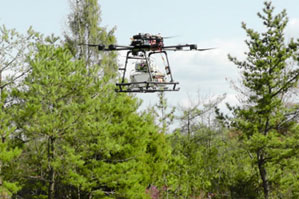Research Groups
Electroceramics Group
Leader, Group, Yoshitake Masuda

Electroceramics Group develops ceramic nanomaterials and electronic ceramic
devices. Our research includes:
Development of ceramic nanomaterials with aqueous solution processes
Development of platinum-substituting high-temperature conductive oxid
Development of “bulk-response type” gas sensor materials
Development of gas sensors for VOCs, exhaled breath, skin gas, indoor gas,
etc.
Development of odor identification technology using sensor array and machinelearning
Development and commercialization of thermoelectric power generation modules
Light and Heat Control Materials Group
Leader, Group, Chihiro Urata

We are developing environmentally responsive materials that change their transmittance and maintain their anti-adhesion function over the long term. For example, we are working on the development of optical switching materials that control the amount of sunlight that flows into rooms and vehicles to realize energy-saving and comfortable spaces, and surface materials that support safe and secure living and energy creation by controlling snow and ice adhesion on road signs, solar panels, and other surfaces.
Energy Storage Materials Group
Leader, Group, Ken-ichi Mimura

Energy Storage Materials Group promotes research and development on novel ceramic materials, process technologies, characterization technologies, and numerical simulation to realize next-generation energy storage devices such as all-solid-state batteries and ceramic capacitors, which are expected to be applied to mobility systems and IoT devices.
Solid State Ionics Materials Group
Leader, Group, Hirofumi Sumi

In order to realize solid oxide fuel cells (SOFC), electrolysis cells (SOEC) and protonic ceramic fuel cells (PCFC), w hich are energy and chemical conversion systems with high efficiency, we are developing new solid state ionics materials such as nanocomposite electrodes, and innovative fabrication processes such as low-temperature sintering for electrolytes. And, we are demonstrating fuel cells using multi-fuels (e.g. liquefied petroleum gas (LPG) and ethanol) for power sources of small mobile applications such as robots and drones.
Nanoporous Materials Group
Leader, Group, Tatsuo Kimura

Towards the proposal of a new industrial structure including the realization of a circular economy through the design of function, the renewal of property, the exploring of novel applications, etc., that cannot be completed by using conventional technologies only, we are aiming to develop inorganic based materials for chemical transformation and then enhance their utilization technologies by making a full use of various nanostructural controls based on our original approach for the porous materials design as the core technology.
Next-generation Permanent Magnet Materials Group
Leader, Group, Yusuke Hirayama

We are developing post-neodymium magnets such as samarium alloy and metastable alloy in order to overcome the resource problem and low heat resistance of neodymium magnets, which are the key to EV motors. In particular, because the performance of magnets is significantly affected by microstructures, we focus on the creation of new powder metallurgy processes.
Functional Magnetic Materials Group
Leader, Group, Shusuke Okada

To realize a sustainable carbon-free society, we are developing soft magnetic materials that improve the energy efficiency of power electronics and mobility, together with solid-state caloric materials characterized by the magnetic entropy. Especially, the Fe-based magnetic refrigerants and the VO2 / NiTi-based heat storage materials are aimed at social implementation by realizing new applications such as magnetic heat pump and active heat storage.